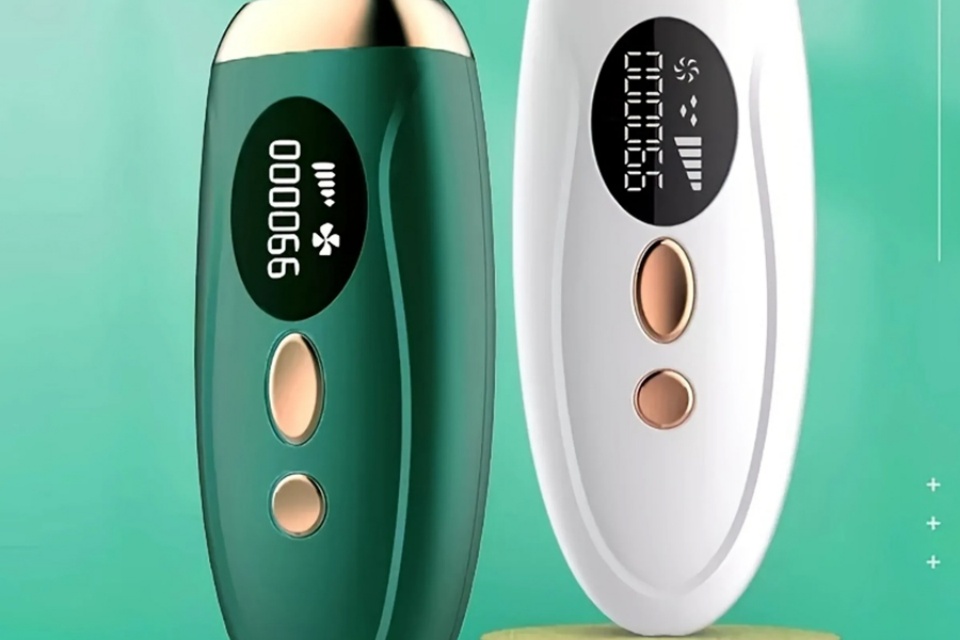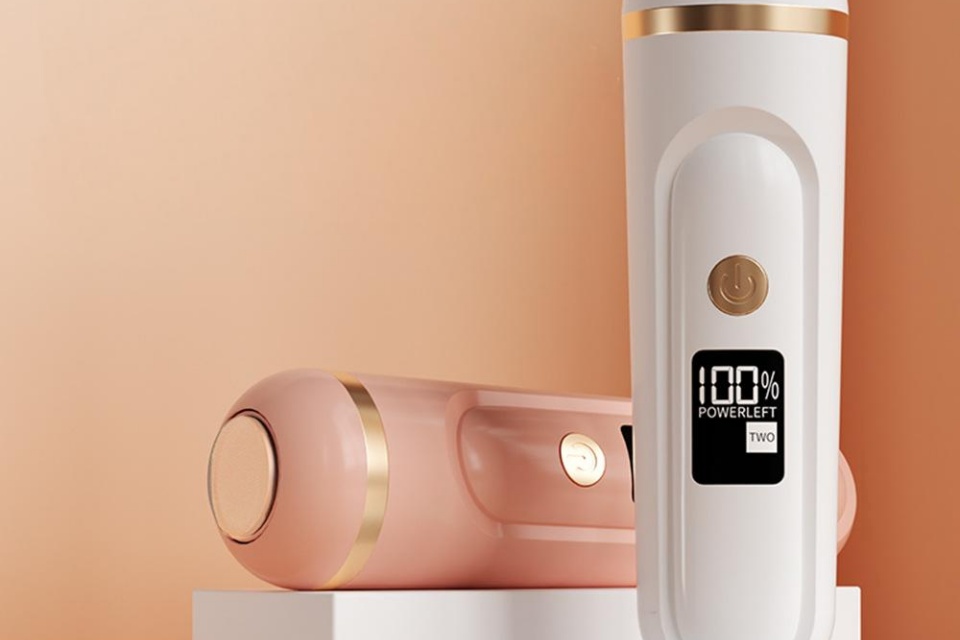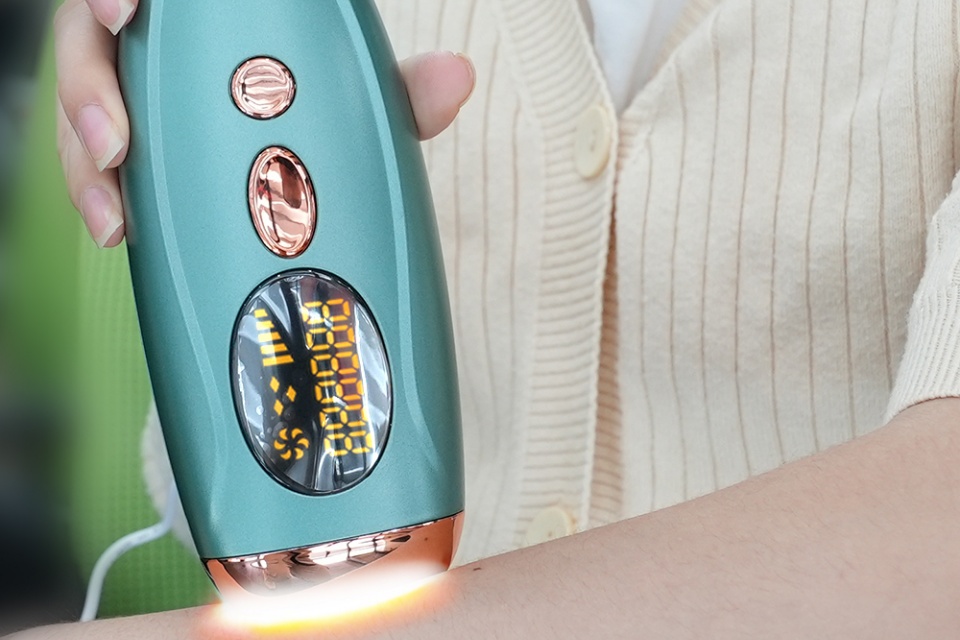IPL Or At Home Diode Lasers-Which Lasts Longer?
Summary
Lead Section: IPL vs. At-Home Diode Lasers
The debate over the longevity and effectiveness of Intense Pulsed Light (IPL) treatments versus at-home diode lasers for hair removal has become a focal point for consumers seeking long-term solutions for hair reduction. IPL technology utilizes a broad spectrum of light to target various skin imperfections, making it popular in both medical and cosmetic settings for treatments ranging from hair removal to skin rejuvenation. In contrast, at-home diode lasers operate using specific wavelengths that more directly target hair follicles, offering users a convenient and potentially effective alternative for personal use.
Notably, clinical studies have demonstrated that while both IPL and diode lasers can achieve significant hair reduction, diode lasers tend to provide faster and more permanent results with fewer treatment sessions required, typically resulting in up to 90% hair reduction over time compared to 45-75% for IPL treatments. Additionally, diode lasers are often perceived as less painful, offering a more comfortable experience for users, while IPL devices may necessitate more frequent treatments, increasing overall costs.
Consumer satisfaction is a critical aspect of this comparison, with many users reporting greater effectiveness and ease of use with diode lasers, despite their higher initial costs. Furthermore, the regulatory distinction between the two technologies—diode lasers being classified as medical devices by the FDA, while IPL devices are categorized as cosmetic—affects consumer trust and perception of efficacy. This ongoing debate not only highlights the varying needs and preferences of consumers but also raises important questions regarding safety, effectiveness, and overall treatment satisfaction in the quest for effective hair removal solutions.
As more individuals turn to at-home treatments, understanding the long-term implications of these technologies, including potential side effects and the importance of professional oversight, remains a crucial consideration for anyone seeking to achieve lasting results.
IPL (Intense Pulsed Light)
Intense pulsed light (IPL) is a versatile technology employed by medical and cosmetic practitioners for various skin treatments, ranging from hair removal to photorejuvenation, which addresses skin pigmentation, sun damage, and thread veins. Additionally, IPL is utilized to treat dermatological conditions such as acne and, more recently, in optometry to manage evaporative dry eye disease due to meibomian gland dysfunction.
Mechanism of Action
IPL operates by emitting a broad spectrum of light, typically between 550 and 1,200 nm, which differentiates it from traditional lasers that use a single wavelength. This broad spectrum allows IPL to target multiple skin imperfections simultaneously in a single session. The treatment works by delivering intense, quick flashes of light that penetrate the skin, targeting pigmented cells and hair roots. The flexibility in light wavelengths enables practitioners to customize treatments according to the specific needs of each patient.
Applications
IPL therapy is commonly used for:
- Hair Removal: It effectively reduces hair growth by targeting the melanin in hair follicles.
- Photorejuvenation: IPL treatments can improve skin texture and color, addressing issues such as red or brown spots caused by sun exposure and aging.
- Dermatologic Conditions: The technology also assists in the treatment of various skin conditions, including acne and rosacea.
Pain and Discomfort
Most patients report that IPL treatments are not particularly painful, often comparing the sensation to a rubber band snap. Any discomfort typically subsides within a few minutes post-treatment. However, individual pain tolerance can vary, which may affect the overall experience of the procedure.
Comparison with Other Technologies
While IPL is effective for various applications, it is often compared to laser treatments, particularly diode lasers. Some studies indicate that both methods yield comparable hair reduction results, though diode lasers may produce less pain and fewer side effects. Furthermore, the choice between IPL and laser technologies may depend on the specific skin type, treatment area, and desired outcomes. IPL devices are recognized for their ability to accommodate different treatment parameters, but the absence of standardized settings can complicate comparisons across different studies.
At-Home Diode Lasers
At-home diode lasers have gained popularity as a convenient alternative for individuals seeking effective hair removal solutions without the need for professional treatments. These devices operate using specific wavelengths, typically around 810 nm, which target the melanin in hair follicles, allowing for efficient hair reduction over time.
Advantages of At-Home Diode Lasers
One significant advantage of at-home diode lasers is their ease of use. These devices are designed for user-friendly operation, allowing individuals to perform treatments in the comfort of their homes. Unlike intense pulsed light (IPL) devices, which emit a broad spectrum of light and may require more sessions for optimal results, diode lasers provide more targeted energy, leading to faster and potentially more permanent outcomes.
Treatment Efficiency and Effectiveness
At-home diode lasers promise effective hair reduction, often achieving noticeable results in fewer sessions compared to IPL devices. The precision of diode lasers allows them to deliver energy more directly to the hair follicles, making them suitable for various skin tones and types, particularly for those with dark hair and light skin. In clinical comparisons, diode lasers have shown to cause less pain and fewer side effects compared to IPL treatments, enhancing user satisfaction.
Considerations and Limitations
While at-home diode lasers offer convenience, users should be aware of certain limitations. The effectiveness of these devices may vary based on individual hair and skin characteristics, and results may not be as immediate or pronounced as professional treatments. Additionally, some at-home devices may not achieve the same power levels as professional machines, potentially leading to longer treatment durations and less permanent results.
Comparative Analysis
Efficacy and Results
When comparing the efficacy of Intense Pulsed Light (IPL) treatments to at-home diode laser devices, clinical evidence suggests a significant difference in hair reduction results. Professional laser treatments can achieve hair reduction rates of approximately 85–90%, while at-home IPL devices typically result in a 45–75% reduction. Furthermore, studies indicate that laser hair removal can eliminate up to 90% of hair over time, whereas pulsed light treatments generally provide about 60% of long-lasting results. This disparity highlights the potential benefits of opting for professional treatments when seeking more substantial and lasting effects.
Treatment Frequency and Cost
The treatment frequency required for achieving desired results varies between the two methods. Users often report needing around six sessions for effective results from diode lasers, with treatments generally scheduled every 4 to 12 weeks. In contrast, IPL treatments may necessitate 8 to 10 sessions spaced 4 to 6 weeks apart. Although IPL devices are perceived as more affordable initially, the cumulative costs can increase substantially due to the need for more frequent sessions, making diode lasers a more cost-effective choice in the long run despite higher upfront costs.
Pain and Side Effects
Pain levels associated with hair removal procedures also differ between IPL and diode laser treatments. Users generally describe laser hair removal as more painful, attributed to the concentrated nature of the laser beam, while IPL may be less painful initially but has longer skin exposure risks, leading to potential side effects like irritation. Additionally, the quality of treatment delivery by trained operators in medical settings minimizes risks, such as burns or skin discoloration, which may be more pronounced with home devices due to user inexperience.
Consumer Satisfaction and Perception
Consumer satisfaction tends to vary based on the treatment method. While many users of both IPL and laser hair removal report satisfaction with the reduced hair growth, satisfaction levels measured on a scale from 1 to 10 averaged around 6.07 for hair removal products. The overall experience, including treatment comfort and perceived effectiveness, can significantly influence users' willingness to pursue additional sessions, as well as their preference for a specific method.
Consumer Perceptions and Market Trends
Consumer perceptions regarding hair removal technologies such as diode lasers and intense pulsed light (IPL) systems play a significant role in shaping market trends. Understanding how these technologies are viewed can help salon owners and manufacturers make informed decisions about their offerings.
Consumer Preferences
When evaluating hair removal services, clients often prioritize factors such as efficacy, safety, and cost-effectiveness. Diode lasers are perceived to deliver more effective and long-lasting results compared to IPL systems, which is a crucial consideration for many consumers seeking permanent hair removal solutions. Although diode lasers typically have a higher upfront cost, their long-term savings due to fewer required treatments make them an attractive option for consumers focused on value.
Market Dynamics
The market for hair removal technologies is influenced by varying consumer perceptions based on skin type and hair color. Diode lasers are particularly effective for specific hair and skin types, which can enhance their appeal among targeted demographics. Conversely, IPL devices are often perceived as more accessible due to their ease of use and wider application range, making them popular among consumers who may seek at-home solutions.
Longevity of Results
Consumer perceptions regarding the longevity of results from diode lasers versus IPL systems are also a pivotal factor. Diode lasers are advertised as providing more permanent hair removal solutions, contributing to their reputation as a reliable choice for consumers. This perception is bolstered by the understanding that diode lasers can yield faster and more enduring results, necessitating fewer sessions than IPL treatments, which rely on a broader light spectrum.
Regulatory Considerations
In the United States, diode lasers are classified as medical devices regulated by the Food and Drug Administration (FDA), which enhances consumer trust in their safety and efficacy. In contrast, IPL devices are often seen as cosmetic products, which can affect consumer perceptions and their willingness to invest in such technologies. This distinction in regulatory oversight may lead consumers to favor diode lasers for their perceived reliability and effectiveness in delivering long-term results.
Clinical Research and Studies
Clinical research into Intense Pulsed Light (IPL) and at-home diode laser treatments has provided valuable insights into their effectiveness, safety, and patient satisfaction. A study analyzing various hair removal technologies found that both IPL and diode lasers significantly reduced hair growth; however, diode lasers generally caused less pain and had fewer side effects compared to IPL treatments. This highlights the need for patients to evaluate their options based on personal comfort and specific skin conditions.
A significant aspect of IPL treatments involves the patient's response and satisfaction levels. In a survey of patients who underwent IPL rejuvenation, results indicated that about 51.5% reported moderate to considerable satisfaction, while 12.1% expressed dissatisfaction with the outcomes. Additionally, a considerable portion of patients (46%) noted improvements in irregular pigmentation following treatment, demonstrating its potential benefits beyond hair removal.
Despite the promising results of IPL treatments, safety is a critical concern. Side effects associated with IPL include skin sensitivity, mild discomfort, and more severe issues such as burns or permanent skin discoloration if not performed correctly. Research suggests that while at-home devices can offer convenience, the risks of adverse effects are minimized when treatments are administered by qualified professionals in clinical settings.
The efficiency of hair removal methods is also an important consideration. Medical devices are designed to achieve significant hair reduction in fewer sessions compared to at-home alternatives, which often require more frequent treatments to yield similar results. Therefore, the choice between at-home IPL and diode lasers versus professional treatments should be made based on individual needs, desired outcomes, and the importance of safety and efficacy.
 English
English Español
Español Português
Português Pусский
Pусский Français
Français Deutsch
Deutsch 日本語
日本語 한국어
한국어 Italiano
Italiano عربى
عربى


